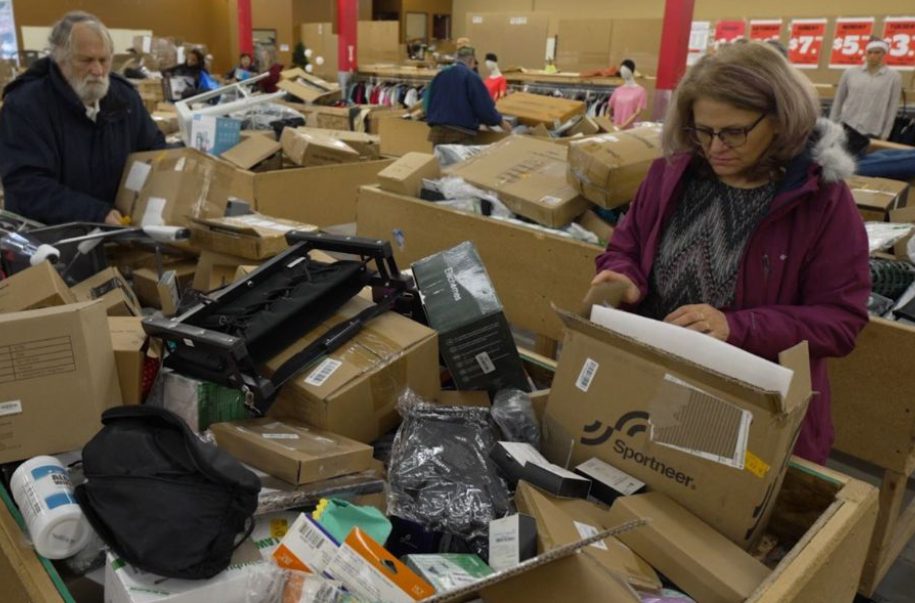If you’ve ever seen someone on social media pull a brand-new gadget or designer item from a random bin for just a few dollars, you’ve already had a peek into the world of bin stores. These shops have become hugely popular across the United States, making bargain-hunting a favorite weekend activity and even a way to start a small business. But what exactly are bin stores, and why are shoppers from all backgrounds so hooked?
Understanding the Concept: What Are Bin Stores?
Bin stores are retail outlets that sell customer-returned, overstocked, or liquidation items from major retailers like Amazon, Walmart, and Target. They buy bulk liquidation pallets, which are giant boxes filled with unsorted goods, at heavily discounted prices. Rather than sorting and pricing each item, the store puts everything into large waist-high bins.
Shoppers can dig through the bins to find treasures, which might include electronics, home goods, toys, tools, or clothing. The excitement comes from not knowing what you’ll find until you start looking. Each visit feels like a treasure hunt, and that’s a big part of the fun.
How the Pricing System Works
One of the most interesting things about bin stores is their changing pricing model. Usually, a store restocks once a week with new pallets and sets a fixed price for all items on the first day, such as $10 per item. As the week goes on, the price drops each day.
Here’s an example of how it might work:
- Friday: New stock arrives – everything is $10
- Saturday: Everything is $8
- Sunday: Everything is $6
- Monday: Everything is $4
- Tuesday: Everything is $2
- Wednesday: Everything is $1
By Thursday, the store is usually closed for restocking. This pricing model keeps people coming in and helps make sure almost every item gets sold, no matter what it’s worth. It also creates a sense of urgency because shoppers know that waiting too long could mean missing out on the best finds.
Why Amazon Return Deals Are So Popular
The main draw of Amazon return deals is the potential for incredible value. Many of the products in these bins are brand new, returned simply because the customer changed their mind or the packaging was slightly damaged. Others might be open-box items or overstocks that retailers couldn’t sell quickly enough.
This means a shopper might pay $5 for wireless earbuds that usually cost $60, or $10 for a smart home gadget worth $100. These big discounts make bin stores not just fun, but also a great way for smart shoppers to save money.
Also, the unpredictable experience keeps people coming back. The inventory is always changing, so each visit feels new. For many regulars, it’s more than just shopping; it’s a hunt.
Who Shops at Bin Stores?
Bin stores attract a diverse mix of customers. You’ll find:
- Bargain hunters looking for amazing deals on household goods or gifts.
- Resellers who buy valuable items to flip on platforms like eBay, Poshmark, or Facebook Marketplace.
- Treasure hunters who simply enjoy the thrill of discovery.
- Families searching for affordable products without breaking the bank.
For some people, this hobby has become a side hustle or even a full business. Resellers can find items with high resale value, like brand-name electronics or tools, for just a few dollars each. The profit margin can be significant when these items are sold online at retail or close to retail prices.
A Growing Trend Across the U.S.
In recent years, bin stores have opened in nearly every state. Cities large and small are seeing the rise of these discount havens, often in repurposed retail spaces or small warehouses. Communities that used to rely solely on big-box discount chains now have local bin stores offering even better deals.
One example is the rapid growth of the Amazon bin store Minnesota, where people visit local stores each weekend to find hidden bargains. The trend is still growing, especially as shoppers look for ways to save money and reduce waste.
Environmental and Economic Benefits
Beyond the excitement of low prices, bin stores also play a role in sustainability. Every year, millions of returned or unsold items from online retailers would otherwise end up in landfills. Bin stores intercept this flow of products, giving them a second chance at being used rather than discarded.
This reuse model supports the circular economy by helping consumer goods last longer. It also helps small communities by offering affordable products that might otherwise be too expensive. Many bin store owners highlight this sustainability message, saying that shopping here is not just smart, but also eco-friendly.
How to Maximize Your Finds
If you’re new to bin store shopping, it helps to go in with a strategy. Here are a few tips to make your visit more productive:
- Arrive early on restock day. The best deals go fast, and regulars often line up before opening.
- Bring gloves. You’ll be digging through mixed items, and gloves can make the search more comfortable.
- Inspect items carefully. Since returns can be open-box or slightly used, check for damage or missing parts.
- Use your phone. Quickly search prices online to confirm whether an item is a true deal.
- Stay patient. The best finds often hide beneath piles of everyday goods.
Over time, you’ll get better at spotting valuable items and might even figure out which types of products are best for reselling.
Are Bin Stores Safe and Legitimate?
It’s natural to wonder whether these deals are “too good to be true.” Fortunately, most bin stores operate legally and transparently. They purchase their inventory through reputable liquidation wholesalers or directly from major retailers’ liquidation divisions.
While not every item will be perfect, the overall value makes the experience worthwhile. Just remember that bin stores typically sell items as-is, meaning returns or exchanges are rare. Always double-check items before checkout to avoid surprises.
The Social Element: A Community of Deal Hunters
What makes bin stores unique is the sense of community they foster. Regular shoppers often form friendships, sharing tips, stories, and even showing off their best finds. Many stores maintain social media pages to announce restock days or showcase “crazy finds of the week.”
This blend of social excitement, competitive fun, and real savings has helped transform a simple liquidation model into a cultural phenomenon. For many, bin store shopping has replaced traditional weekend retail therapy.
Final Thoughts: The Future of Discount Retail
Bin stores represent a reBin stores are a refreshing change in retail, focusing on affordability, sustainability, and discovery instead of just polish and predictability. They’ve transformed the typical clearance aisle into an interactive experience where every item feels like a small win. smart, eco-conscious ways to shop, the popularity of Amazon return deals and bin stores will only continue to grow. Whether you’re a deal lover or an entrepreneur looking for hidden gems, this trend is here to stay — and the next great find might just be waiting in a bin near you.





























